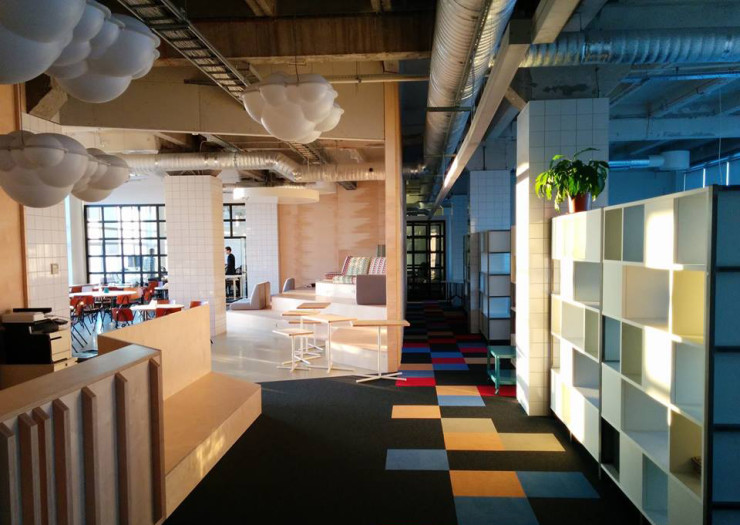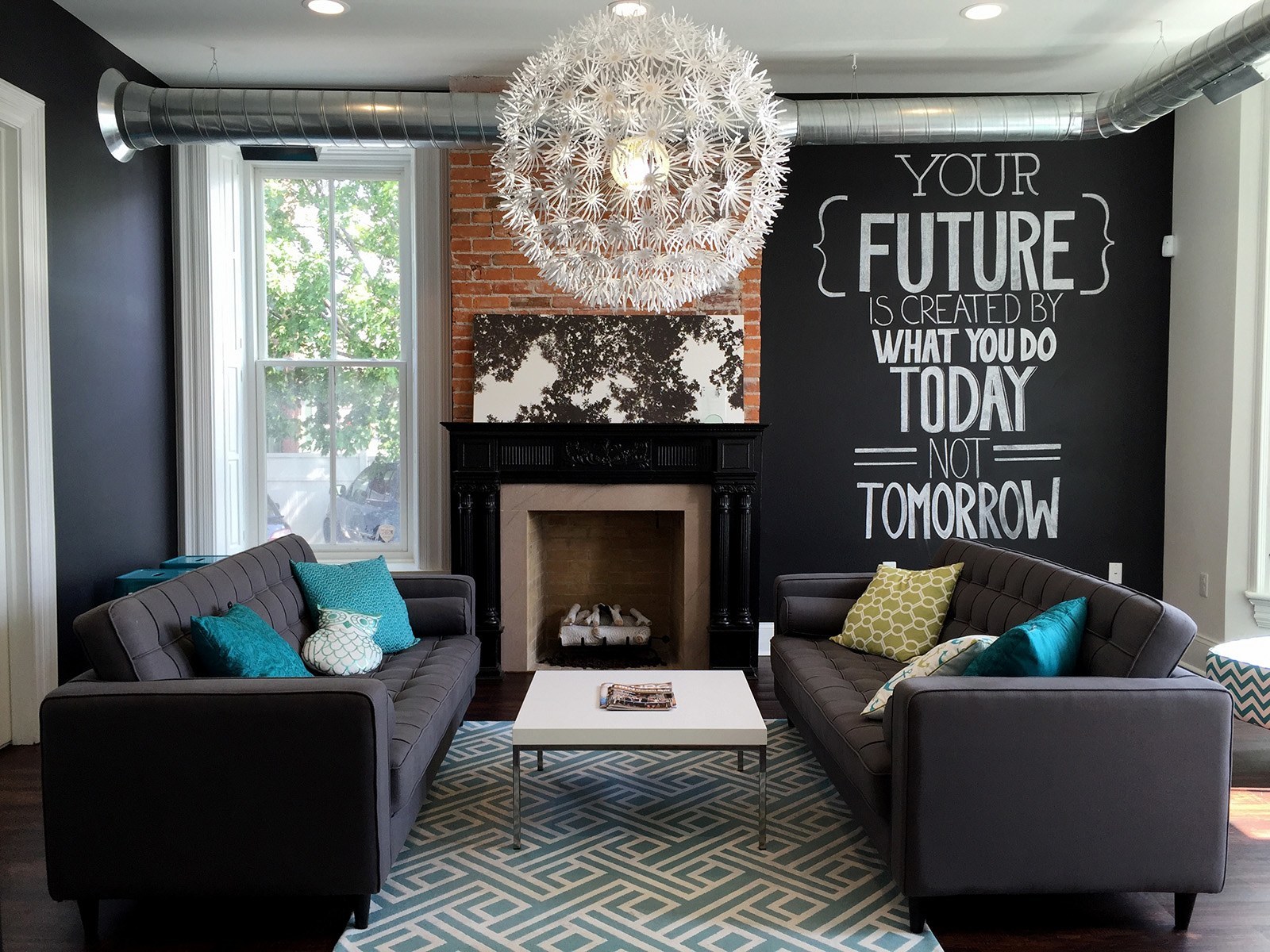The office is your space to be productive. It’s where you do most of your work, spend most of your weekday waking hours and where you need to be able to focus. The same can be said for your employees. Because of this, many business owners focus on productivity – on having the right equipment in the right spaces to ensure every task can be accomplished on time.
What about making your space more inviting? What about making it a place that you and your employees want to show up at every day, where collaboration that leads to measurable results can happen and where each person can be the best they can be to reach company goals? It all starts with making your office a little more inviting. Follow the 10 tips below to get started.
- Eliminate Awkward Silences
Silence happens. While many business owners see silence as a positive, a sign that progress is taking place, many others see it as a distraction. While distracting noises and loud music might be detrimental to a positive working environment, other sounds may be more beneficial. In fact, one study found that work output increased 6.3 percent by adding background noise.
How do you incorporate this into your office? Consider what you’d like to add. Simple water sounds can be added – along with a little décor – by adding a small fountain to a common space in your office. If it’s light music or white noise that you’re going for, consider visiting an electronics store and checking out surround sound systems. Keep the music at a low level to avoid causing more distractions and to help with overall workflow. Unsure of what will work for your employees? Create a simple survey and ask employees to report on their working styles and preferences.
- Make Space for Collaboration
If employees feel like they’re sequestered in their cubicles all day and only brought together for weekly meetings or other planned events, they’re likely to feel limited in what they can accomplish. This is especially true when they need to bounce ideas off another employee or to work with a group to get something done.
Collaboration may be more important to your employees than you think: 97 percent of employees believe that a lack of alignment within a working environment impacts the outcome of a project or task. This means that when employees are not able to work together, overall productivity could suffer. Furthermore, 90 percent of employees who co-work regularly report higher levels of confidence and creativity at work.
To make your office a place where collaboration happens freely, various concepts exist. Open office consultants are available to work on the overall flow of your space. Additionally, creating conference rooms that can be reserved by employees and that foster creativity and communication – think white boards, projectors and more – could help.
Check out the awesome collaboration spaces inside New Relic’s office, which was a featured top office on Office Lovin’.

- Remove Clutter
It’s a given: Clutter leads to distractions and takes away our ability to function. It also leads to negative emotions – 57 percent of employees admit to judging co-workers based on the clutter in their workspaces. This is inherently negative in an office environment. Encourage employees to tidy up their spaces on a regular basis and make tools available – like color-coded filing systems – to make it easier for them to accomplish this. Lead by example by keeping your own space neat at the end of each day.
To take it one step further, consider hiring an office cleaning service. Visit Angie’s List to get recommendations or check out local directories to find those that come highly recommended. Gather quotes and set a schedule that fits within your budget. While this will not help individual cubicles, it will keep general, shared spaces cleaner and more welcoming.
Vinted, another top office on Office Lovin’, has cubicle storage to keep messes at bay.

- Focus on Lighting
You probably select light bulbs and lighting fixtures for your office based on what’s on sale. Unfortunately, cheaper lighting solutions are generally less-than-preferred, leading to headaches, higher stress levels and other unwelcoming side effects.
To enhance lighting in your office, take a look around. Would you consider your space to be soft, or too bright? Do employees have dark areas where they’re expected to get work done? Are certain areas filled with natural lighting while others feel dark and cavelike? What can you improve? Take the time to learn more about sustainable, welcoming work environments and to invest in new lighting if your office could use an improvement.
- Think Beyond the Cubicle
Your own office or cubicle might be fresh, full of color and welcoming to those who stop by, but making your office more inviting doesn’t stop with your personal workspace. Think outside that space, to common areas, lunch rooms, conference rooms, foyers and more to increase the welcoming effect.
Consider offering freebies at your receptionist’s desk to those who stop by, adding artwork to the walls and considering new flooring options that go beyond tile. When work feels a little more like home – with the same expectations you’ve always set, of course – employees and visitors are more likely to feel relaxed and rejuvenated when they spend time there.
WebpageFX has incredible wall art throughout their top office. Besides sprucing up the walls, the various quotes are meant to inspire employees.

- Allow for Personalization
Sure, certain levels of personalization may lead to distractions or detract from your overall office environment. However, employees should be encouraged to express themselves in their own spaces.
By encouraging employees to bring in photos from home, artwork and other mementos that matter to them, you’re making them feel more welcome at work and showing that individuality matters to you. Ask if any office supplies are preferred and add a few for each employee to each month’s stock order. If someone feels free to express themselves, they’re more likely to enjoy their time at work and to reach for higher goals on the job.
- Keep the Space Fresh
Who wants to spend eight to 10 hours a day in a place that smells like cleaning solution, rotted fridge food or yesterday’s lunch? You can overcome this with a mix of wall scents and plants throughout the office.
Not convinced? A study by Rutgers found that flowers have an immediate impact on happiness and other emotions, decrease depression and enhance communication and relationships. Why wouldn’t this be a great fit for your office space?
It doesn’t have to be flowers, though. Any plant will work. Beats by Dr. Dre has trees in their new Los Angeles Headquarters.

- Make It Comfortable
There’s nothing worse than being uncomfortable in a space. If your back hurts from a chair at home, you’d get rid of it. Why not put the same consideration into your employees’ working spaces? If they’re not comfortable at work, how can they accomplish what needs to be done?
Nearly 200,000 work-related injuries could be prevented each year if employers spent time learning about ergonomic working environments and providing their employees with the right equipment – desks of the right height, chairs that help posture, keyboards that fit various hand sizes and more. To learn more about ergonomic office options, check out the U.S. Department of Labor’s resources and visit local office stores to find affordable solutions. Remember, your office is the home-away-from-home for both your employees and you; keep it comfortable for maximum positive impacts.
- Add Room to Relax
No, you don’t want your employees lying down on the job, but this doesn’t mean that you want them to go nonstop all day long without room to breathe. When employees feel too much stress on the job, they’re likely to burn out. Encouraging breaks eliminates guilt and stress and leads to more productivity overall.
Research various break formats and theories and encourage your employees to participate. Take it one step further by creating a map of walking trails, making a relaxation space inside your office or creating a break room. Invest in the best office water cooler for your employees.
Airbnb has plenty of room to relax, and even has a cafeteria for employees to grab something to eat on their breaks.

- Add Some Color
For some time, white was seen as the standard color for office spaces. What many have found, however, is that white may be too intense, adding a sense of tension and stress to already stressful working environments. Other colors have the opposite effect, like blue, lavender, green and other natural or nature-based shades.
To pick the right color for your space, do research on which colors are best for promoting the vibes you’d like to encourage, or contact professionals that work with office design. A little new color could enhance your overall office space and increase the effectiveness of your employees without a large investment.
LinkedIn incorporated plenty of color in their revamped headquarters.

When your office is an inviting, welcoming space to be, your employees and those you interact with in the office on a regular basis will feel more positive about their positions and relationships at work; this fosters growth and productivity. If your office space could use a boost, start with the ideas above.



